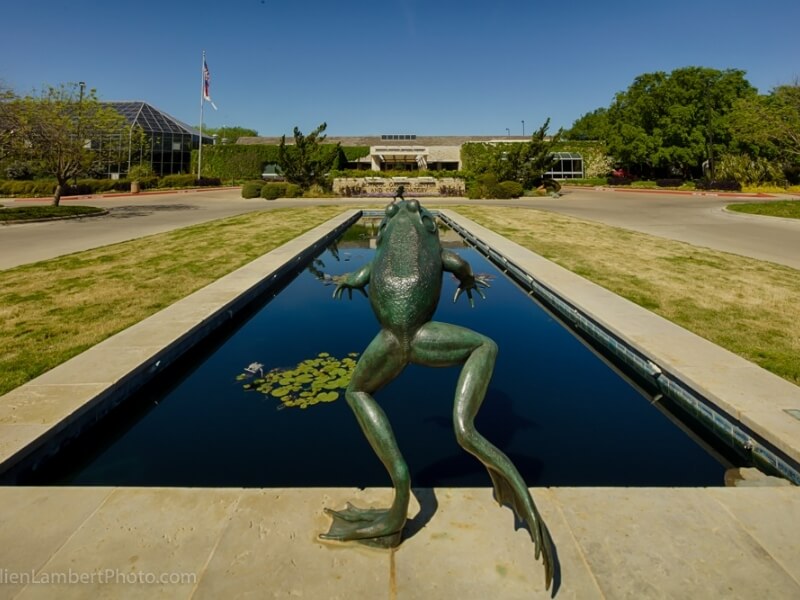Dalea reverchonii (Comanche Peak Prairie Clover)
In the spring of 2012, BRIT botanists conducted extensive surveys of limestone prairies, barrens, and glades in the Fort Worth Prairie and northern Limestone Cut Plain of north central Texas. The Fort Worth Prairie (also known as the Grand Prairie) is a vast grassland with gently sloping, almost level plains dissected by valleys along rivers and streams. This prairie ecosystem is underlain by limestone geology with limestone bedrock near the surface across most of the region. This limestone gives the Fort Worth Prairie its unique features. Thin soil over top of limestone restricts root penetration limiting the growth of woody vegetation. The area historically supported a vast grassland with woody vegetation mostly limited to river edges, hilltops, or mesas where soil was deeper and moisture more plentiful. Areas where limestone outcrops form “glades” reminiscent of the cedar glades found in the Central Basin of Tennessee were searched for Dalea reverchonii. Satellite imagery and geologic maps were used to identify other possible locations for exploration. When a plant was found, herbarium collections were made.

Dalea reverchonii was discovered in 1882 by botanist Julien Reverchon at Comanche Peak in Hood County, Texas and was described as a new species in 1886. The species was collected again in 1900 but was not seen for 64 years afterwards, until 1964 when Barneby collected the species near Springtown, Texas. Several botanists have worked to find the species through the years. The species only occurs on Walnut Limestone outcrops of the Fort Worth Prairie.
During the 2012 survey, BRIT botanists documented 33 new populations of Dalea reverchonii, bringing the total to 69 sites. All of the populations occur in 8 counties in north central Texas. The species is highly restricted in its habitat preference and is one of the most unique plant species in north central Texas.
In October, 2014 Kim Taylor and Bob O’Kennon partnered with Texas Parks and Wildlife to train Texas Department of Transportation workers about the habitat of Dalea reverchonii. Taylor and O’Kennon lead a field trip to 8 sites in the area to show TXDOT employees what the plant looks like, how to identify it, and what the habitat looks like. This work will help prevent future losses of this rare species due to road construction.
CITATION: Taylor, K.N. and R. J. O’Kennon. 2013. Ecology and distribution of the north central Texas endemic Dalea reverchonii (Fabaceae). J. Bot. Res. Inst. Texas 7:603–610.

Research Team
Kim Norton Taylor Conservation Research Botanist
Carousel items
-
Collections Insights
Collections Insights brings together three distinct perspectives that reflect the depth and richness of botanical collections—from the relationship between herbaria and libraries to the hidden treasures of archival holdings, and the personal narratives of those working in the field.
-
The Sherwin Carlquist Collection
The Sherwin Carlquist Collection encapsulates more than 30 years of important botanical research conducted by the renowned mid-century American botanist.
-
The Oliver G. Burk Children’s Collection
The Oliver G. Burk Children’s collection is a treasure of both rare and new books on botany and natural history.
-
Library Archives Collection
The BRIT Library houses one of the largest and finest collections of botanical works in the southwestern United States.
-
Rare Book Room Collection
The Discovery Fund Rare Book Room includes an exceptional collection of books and limited-edition items, some of which were published over 200 years ago and are fragile, scarce, or valuable.
-
The Arader Natural History Collection of Art
As one of the newer additions to the Library, the Arader Natural History Collection of Art celebrates art, science, and the beauty of plants and nature.
-
The Stansbery Collection for Botanical Art
Through the generosity of Will and Kay Stansbery, the BRIT library offers access to a collection of books focusing on botanical art and illustration, and art history.
-
Discovery Resources
Explore a curated collection of educational and digital resources from the BRIT Library and beyond.
-
BRIT Library History
In large measure, the library of the Botanical Research Institute of Texas owes its existence to Lloyd H. Shinners and his vision of the future.
-
BRIT Library History
In large measure, the library of the Botanical Research Institute of Texas owes its existence to Lloyd H. Shinners and his vision of the future.
-
BRIT Library History
In large measure, the library of the Botanical Research Institute of Texas owes its existence to Lloyd H. Shinners and his vision of the future.
-
BRIT Library History
In large measure, the library of the Botanical Research Institute of Texas owes its existence to Lloyd H. Shinners and his vision of the future.
-
BRIT Library History
In large measure, the library of the Botanical Research Institute of Texas owes its existence to Lloyd H. Shinners and his vision of the future.
-
BRIT Library History
In large measure, the library of the Botanical Research Institute of Texas owes its existence to Lloyd H. Shinners and his vision of the future.
-
BRIT Library History
In large measure, the library of the Botanical Research Institute of Texas owes its existence to Lloyd H. Shinners and his vision of the future.
-
BRIT Library History
In large measure, the library of the Botanical Research Institute of Texas owes its existence to Lloyd H. Shinners and his vision of the future.
-
BRIT Library History
In large measure, the library of the Botanical Research Institute of Texas owes its existence to Lloyd H. Shinners and his vision of the future.
-
BRIT Library History
In large measure, the library of the Botanical Research Institute of Texas owes its existence to Lloyd H. Shinners and his vision of the future.
-
BRIT Library History
In large measure, the library of the Botanical Research Institute of Texas owes its existence to Lloyd H. Shinners and his vision of the future.
-
BRIT Library History
In large measure, the library of the Botanical Research Institute of Texas owes its existence to Lloyd H. Shinners and his vision of the future.
-
BRIT Library History
In large measure, the library of the Botanical Research Institute of Texas owes its existence to Lloyd H. Shinners and his vision of the future.
-
BRIT Library History
In large measure, the library of the Botanical Research Institute of Texas owes its existence to Lloyd H. Shinners and his vision of the future.
-
Participate
In a world of increasing demands and shrinking dollars, you can also support our mission by sponsoring specific resources and preservation efforts.


